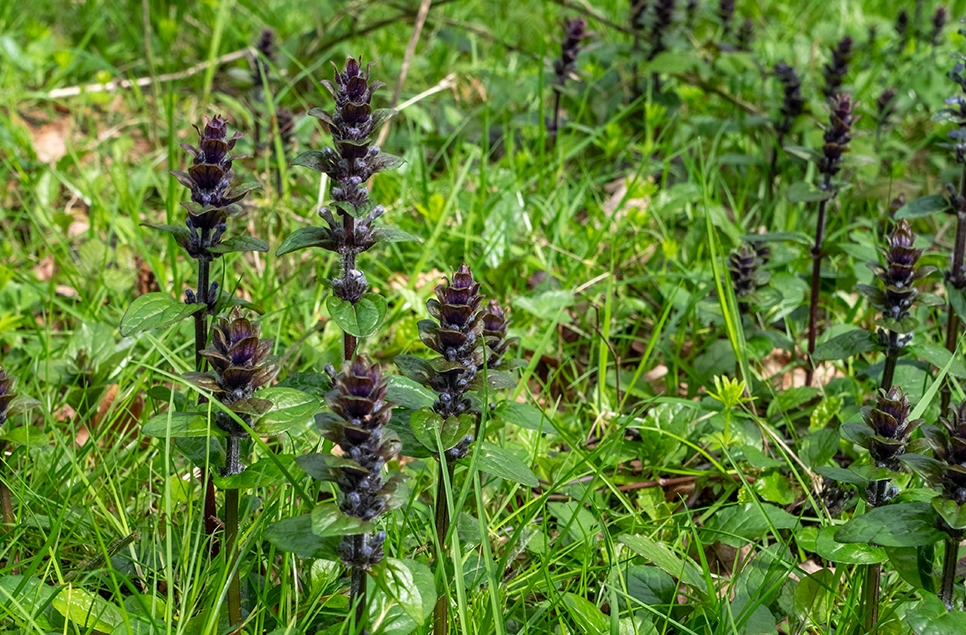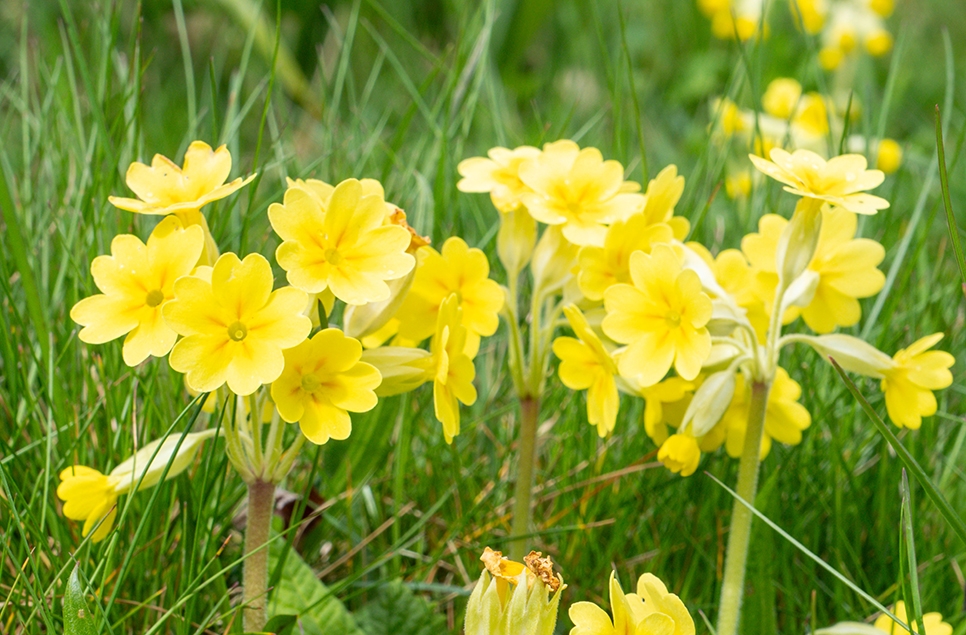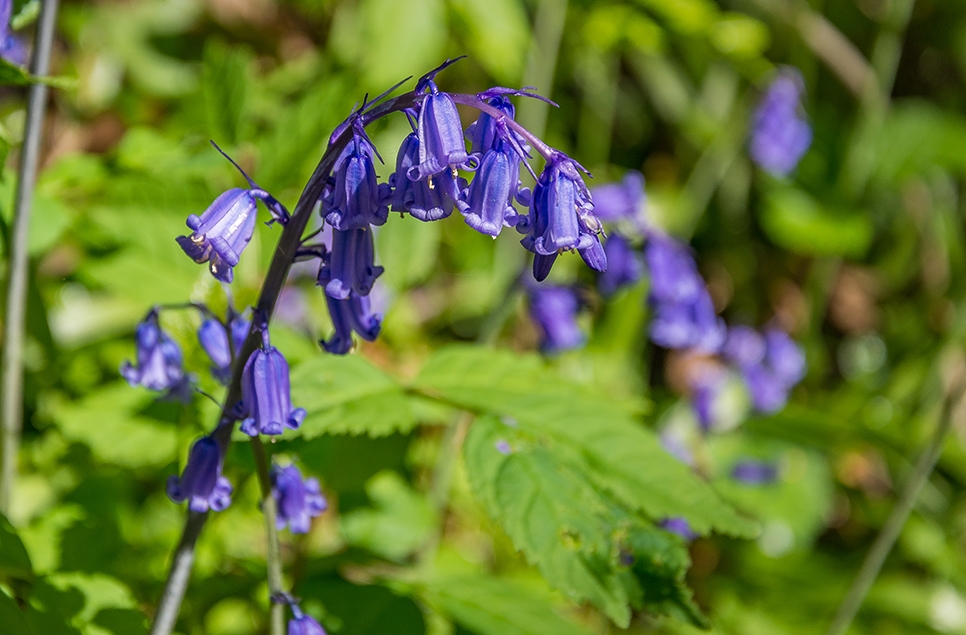Follow our trail and find ten wildflowers on our reserve
Wildflowers are starting to show nicely around the reserve of Washington Wetland Centre, with a wide variety of shapes, sizes and colours to see. There are plenty to be found as you move through North Wood, Top Meadow and Spring Gill.
Start at North Wood foxgates to follow this self-led trail...
1. Wild garlic (Allium ursinum)
Location: On the path edges just before the fox proof gates
Also known as ramsons, wild garlic has broad pointed leaves with delicate white flowers at the end of long slim stems. Look for them in shady woods from April to June. Found at a variety of other places around site, including the path to Lagoon View hide.

2. Woodruff (Galium odoratum)
Location: North Wood in the area opposite the giant nest!
Interestingly, this plant is in the same family as the coffee plant (the Rubiaceae family, or bedstraw family). It might look familiar to people who know ‘Cleavers’ or ‘Sticky jack’ (the plant we all have fun sticking to each others backs when we aren’t looking) because these two plants are both in the bedstraw family. They both have leaves that spiral (whorled leaves) at the nodes along the stem.

3. Bugle (Ajuga reptans)
Location: North Wood in the area opposite the giant nest - in with the woodruff!
A member of the mint or 'dead nettle' family (Lamiaceae), bugle have square stems and small purple flowers arranged oppositely on the stem.

4. Greater Stitchwort (Stellaria holostea)
Location: Towards the end of North Wood on the bend just before Top Meadow.
A member of the campion family (Caryophyllaceae). Greater stitchwort have five individual petals that are notched at the tip to divide the petal into two lobes and give it a heart shaped appearance. This notch often confuses people into thinking they have 10 petals!

5. Primrose (Primula vulgaris)
Location: Top Meadow, near the bench and wooden toadstool sculpture
Primrose (Primulaceae family) and also Cowslip, another member of the Primrose family, are interesting because they have two flower morphs with different arrangements of the male and female parts into either a pin and thrum flower, which cleverly allows them to stop themselves from being self-pollinated and maintain genetic diversity in their offspring.

6. Dog violet (Viola riviniana)
Location: Spring Gill, just to the left before the bridge.
Enjoying a range of habitats from April to June, common dog violet has deep purple pansy-like petals and heart-shaped leaves. It doesn't produce any scent unlike the similar sweet violet, but is hugely important for a variety of rare fritillary butterflies, which feed and occasionally lay their eggs here.

7. Lesser celandine (Ficaria verna)
Location: Spring Gill, just to the left before the bridge - among the dog violet.
Favouring damp woodland paths, lesser celandine bring a burst of colour to Spring Gill. These are early flowering plants often seen between January and April. They provide an early nectar source to queen bumblebees and other emerging insects.

8. Wood sorrel (Oxalis acetosella)
Location: Spring Gill around the mossy green logs just after the bridge.
A member of the Oxalidaceae family, this delicate plant has lovely trifoliate (three) leaves and small white, bell-shaped flowers with purple veins on the petals. Curiously both the flower and leaves close up at night!

9. English common bluebell (Hyacinthoides non-scripta)
Location: Spring Gill in abundance after the bridge.
Carpeting Spring Gill wood, English bluebells are small and delicate with ‘drooping’ petals and cream coloured pollen/anthers. They tend to have the flowers arranged on one side of the stem. By comparison, Spanish bluebells are non-native and are much more upright, with light blue (or pink sometimes too) flowers all around the stem and flowers that have light green or blue pollen/anthers.

10. Meadow foxtail (Alopecurus pratensis)
Location: All around Old Oak Meadow
This is a grass species, with an inflorescence (flowering spikes) that resembles a bushy fox's tail, hence the name. It's usually one of the first grasses to flower and is easy to identify because of all the little clumps of 'fox tails' bobbing about in the wind on the meadows. Also found around Forgotten Meadow and Saline Lagoon Meadow.

Ready to visit?
If you've been inspired to explore Washington Wetland Centre and search for wildflowers, find out more and plan your visit online.
Plan your visit


